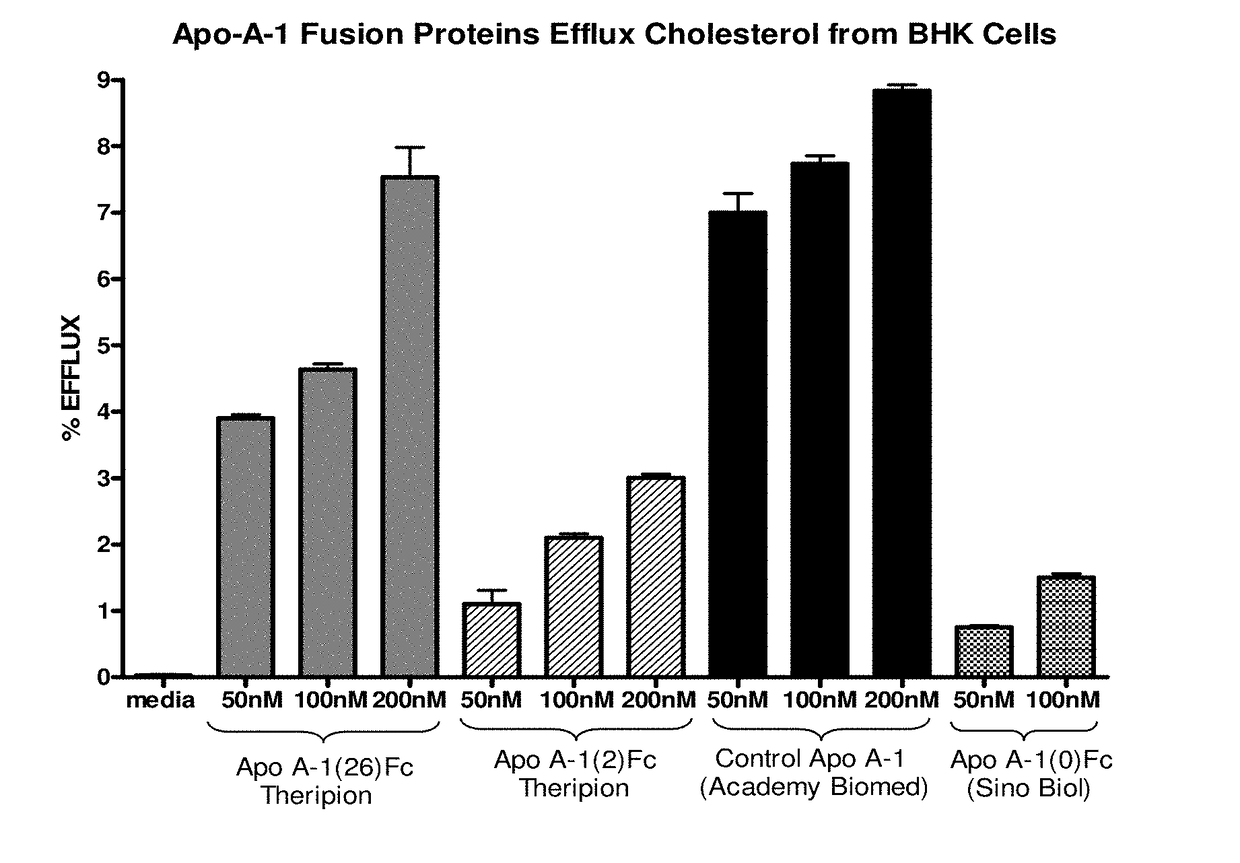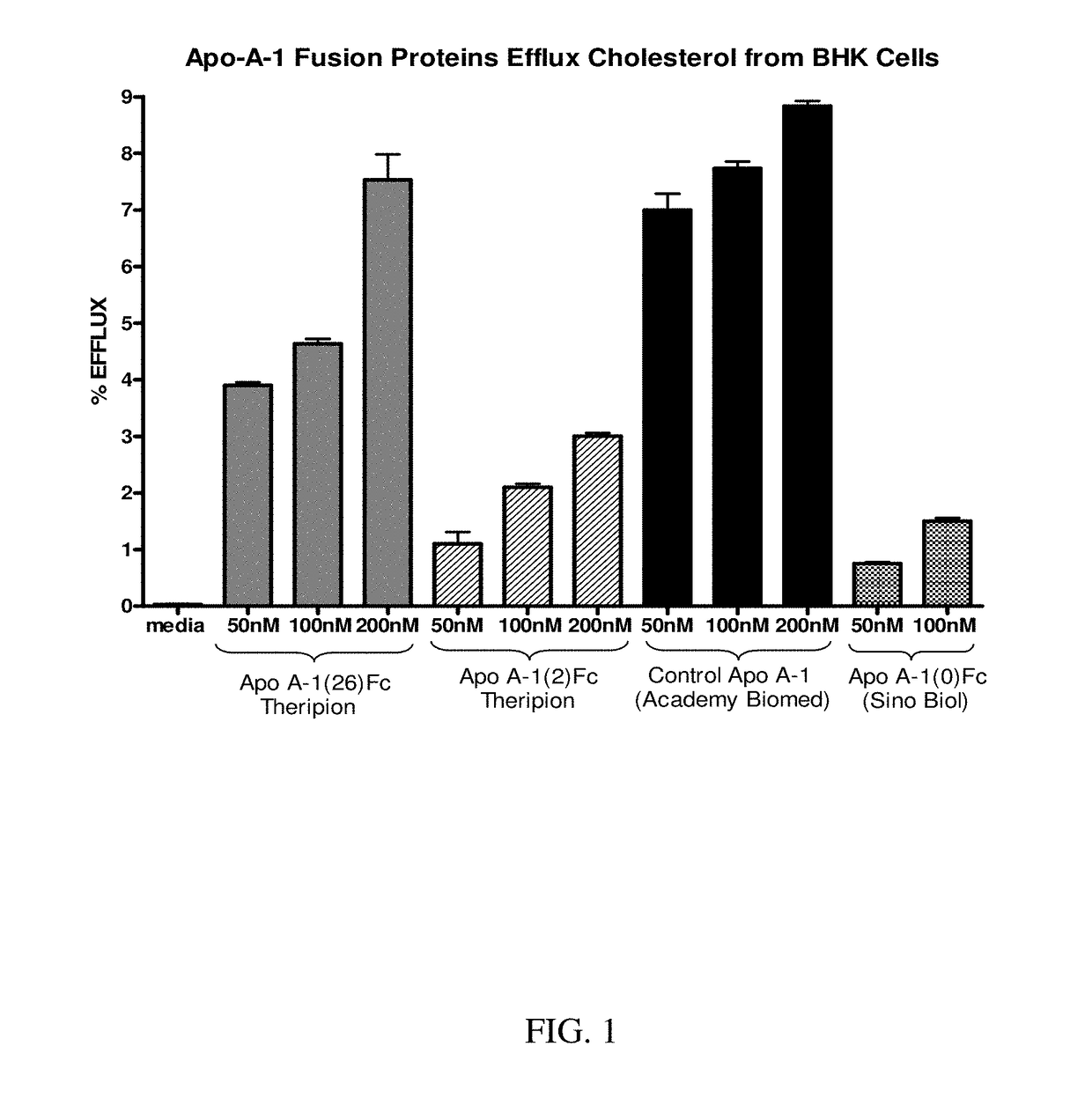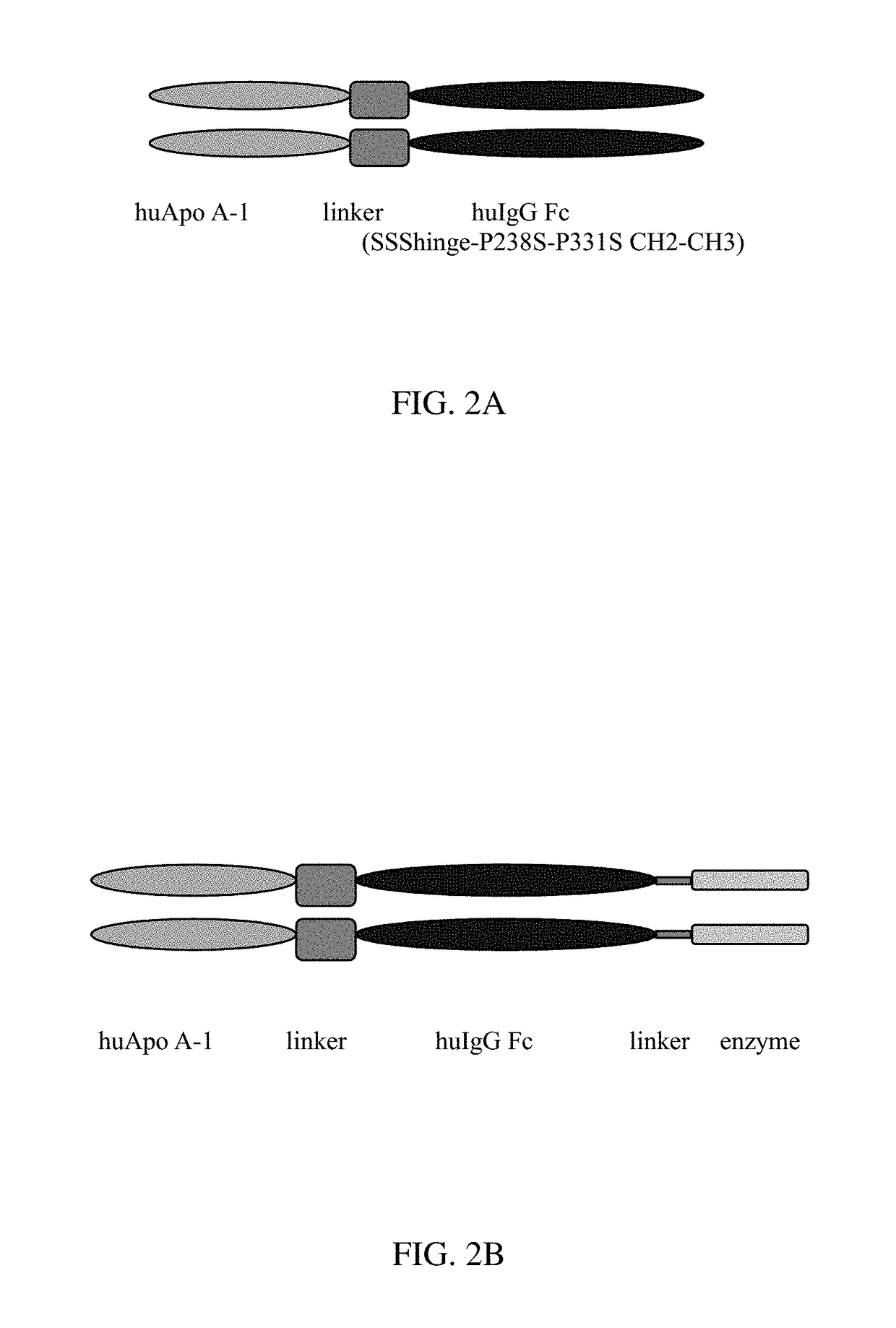Apoa-1 fusion polypeptides and related compositions and methods
a technology of fusion polypeptides and apoa-1, which is applied in the field of apoa-1 fusion polypeptides and related compositions and methods, can solve the problems of low levels of high density lipoprotein (hdl) and associated risk, and drugs that increase hdl by inhibiting rct with inhibitors of cholesterol ester transfer protein (cetp) have not been effectiv
- Summary
- Abstract
- Description
- Claims
- Application Information
AI Technical Summary
Benefits of technology
Problems solved by technology
Method used
Image
Examples
example 1
[0247]Molecule Design and Preparation:
[0248]Two ApoA-1-Fc cDNA constructs were designed, synthesized, expressed by transient transfection of COST cells, and the expressed proteins then purified by Protein A chromatography. One construct had the nucleotide sequence shown in SEQ ID NO:1 and encoded the fusion polypeptide of SEQ ID NO:2, and is also referred to herein as ApoA-1(26)Fc or THER4. This construct contained a DNA segment encoding a 26 amino acid linker (residues 268-293 of SEQ ID NO:2) between the C-terminal end of human ApoA-1 (residues 1-267 of SEQ ID NO:2) and a human γ1 Fc variant (residues 294-525 of SEQ ID NO:2). Upon expression in mammalian cells and cleavage of the secretory signal peptide (residues 1-18), and any potential cleavage of the propeptide (residues 19-24), this fusion polypeptide had a predicted amino acid sequence corresponding to residues 19-525, 19-524, 25-525, or 25-524 of SEQ ID NO:2 (the C-terminal lysine of the Fc region is known to be frequently c...
example 2
n of Fusion Constructs and Sequence Verification
[0251]Additional ApoA1 fusion constructs were designed and the fusion gene sequences were submitted to Blue Heron (Bothell, Wash.) for gene synthesis. A basic schematic diagramming the position of functional domains is shown in FIGS. 2A and 2B for the design of the ApoA1 fusion proteins. Fusion gene constructs inserted into pUC-based vectors isolated by restriction enzyme digestion, and fragments encoding the fusion genes were subcloned into the mammalian expression vector pDG. Briefly, HindIII+XbaI flanking restriction sites were used for removal of each expression gene from the vector, subfragments isolated by gel electrophoresis, DNA extracted using QIAquick purification columns, and eluted in 30 microliters EB buffer. Fragments were ligated into HindIII+XbaI digested pDG vector, and ligation reactions transformed into NEB 5-alpha, chemically competent bacteria. Clones were inoculated into 3 ml LB broth with 100 μg / ml ampicillin, gr...
example 3
n of Fusion Proteins in a Transient HEK 293T Transfection System
[0253]This example illustrates transfection of plasmid constructs and expression of fusion proteins described herein in a mammalian transient transfection system. The Ig fusion gene fragments with correct sequence were inserted into the mammalian expression vector pDG, and DNA from positive clones was amplified using QIAGEN plasmid preparation kits (QIAGEN, Valencia, Calif.). Five different constructs were generated. These each included the native coding sequence of the human ApoA-1 gene (nucleotide sequence shown in SEQ ID NO:35, encoding the amino acid sequence shown in SEQ ID NO:36). Each sequence included the wild-type signal peptide (nucleotides 1-54 of SEQ ID NO:35, encoding amino acids 1-18 of SEQ ID NO:36) and propeptide sequences (nucleotides 55-72 of SEQ ID NO:35, encoding amino acids 19-24 of SEQ ID NO:36) for apolipoprotein A-1. The C-terminal Q (Gln) residues of the ApoA-1 sequence was linked via a variable...
PUM
| Property | Measurement | Unit |
|---|---|---|
| Fraction | aaaaa | aaaaa |
| Time | aaaaa | aaaaa |
| Time | aaaaa | aaaaa |
Abstract
Description
Claims
Application Information
 Login to View More
Login to View More - R&D
- Intellectual Property
- Life Sciences
- Materials
- Tech Scout
- Unparalleled Data Quality
- Higher Quality Content
- 60% Fewer Hallucinations
Browse by: Latest US Patents, China's latest patents, Technical Efficacy Thesaurus, Application Domain, Technology Topic, Popular Technical Reports.
© 2025 PatSnap. All rights reserved.Legal|Privacy policy|Modern Slavery Act Transparency Statement|Sitemap|About US| Contact US: help@patsnap.com



